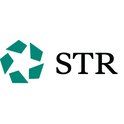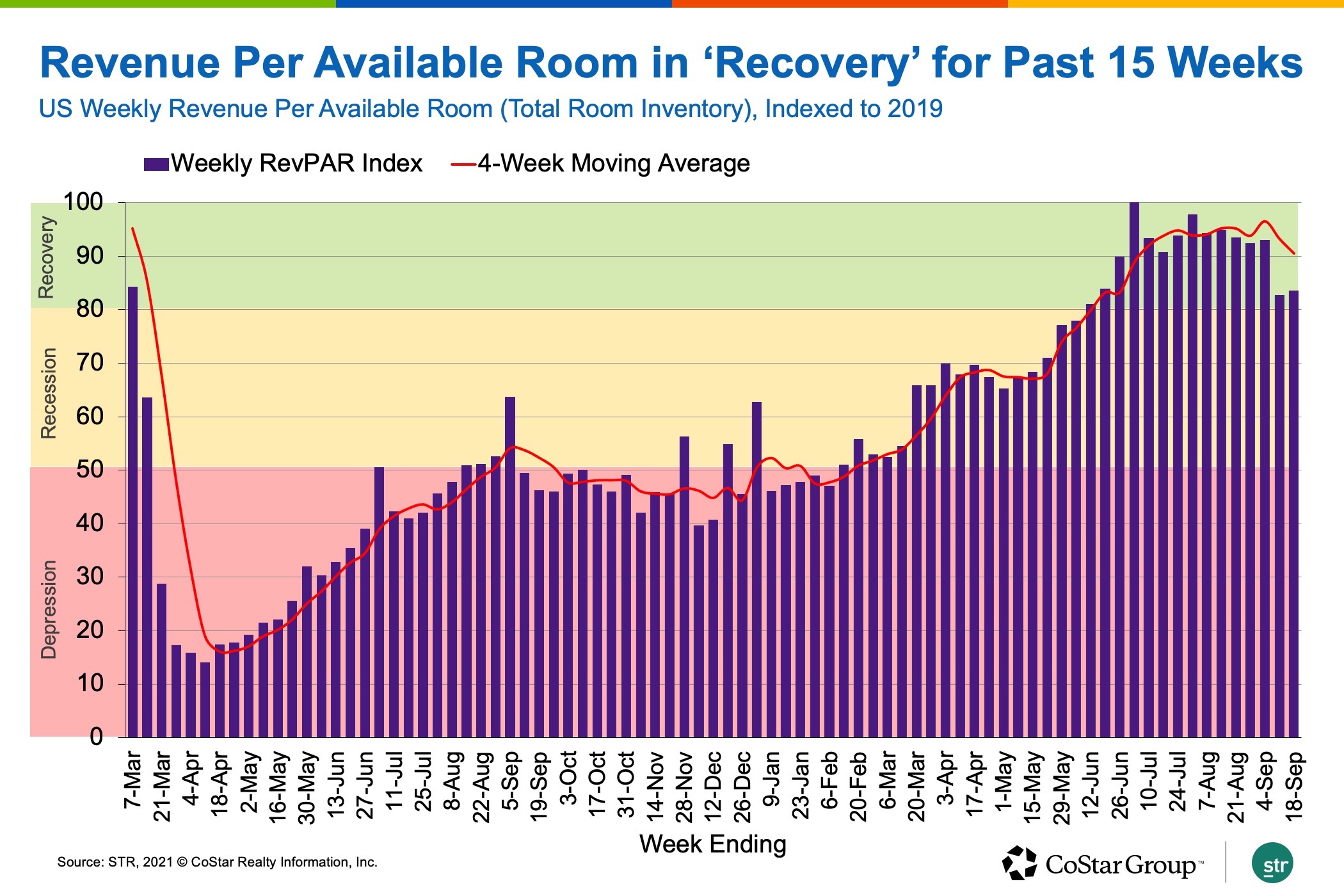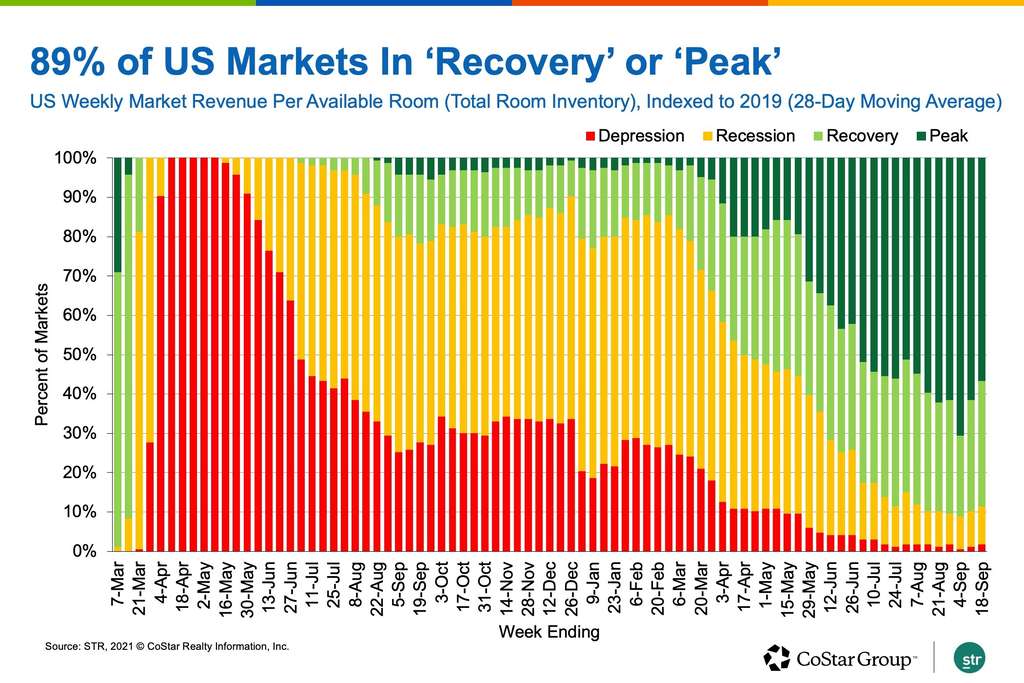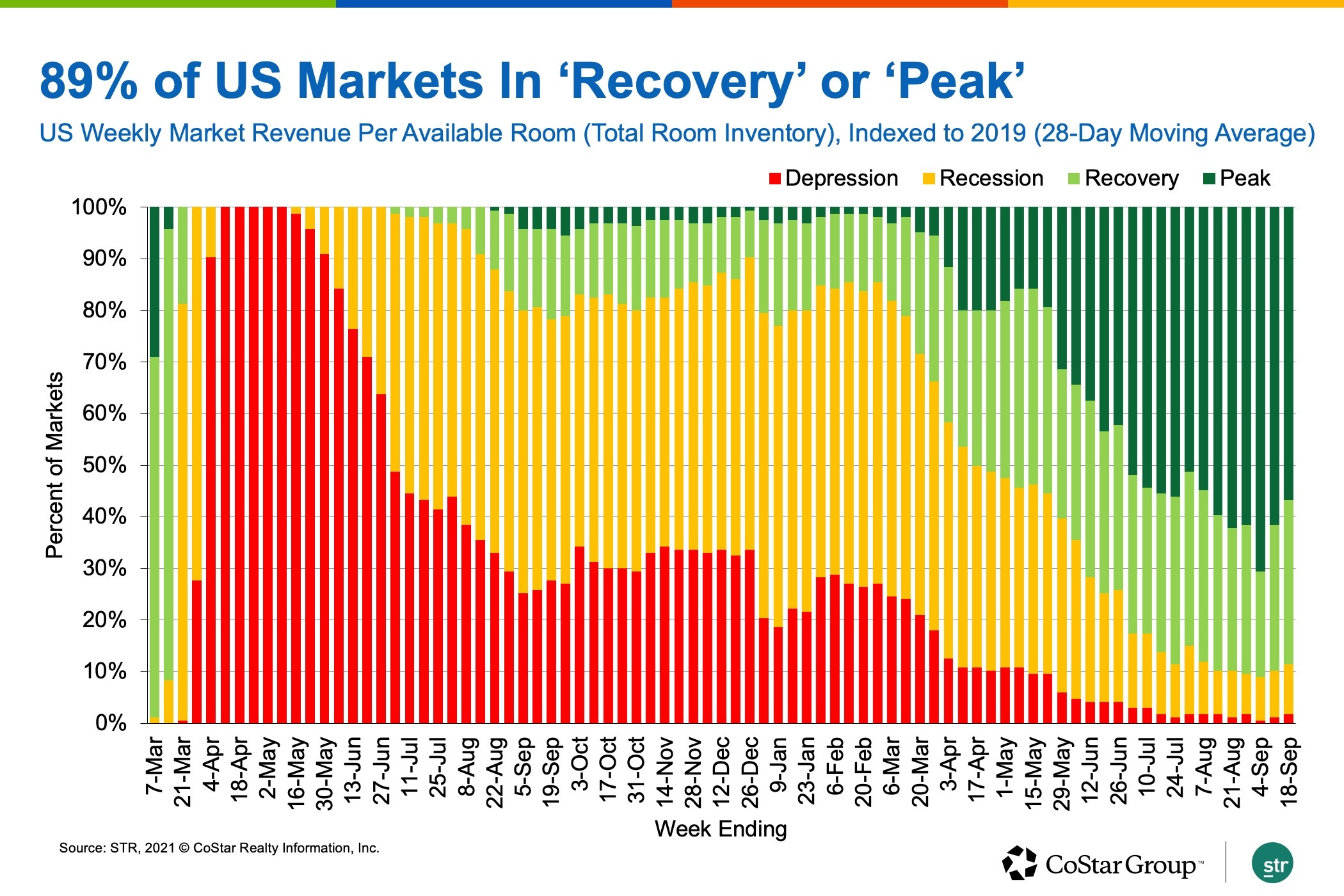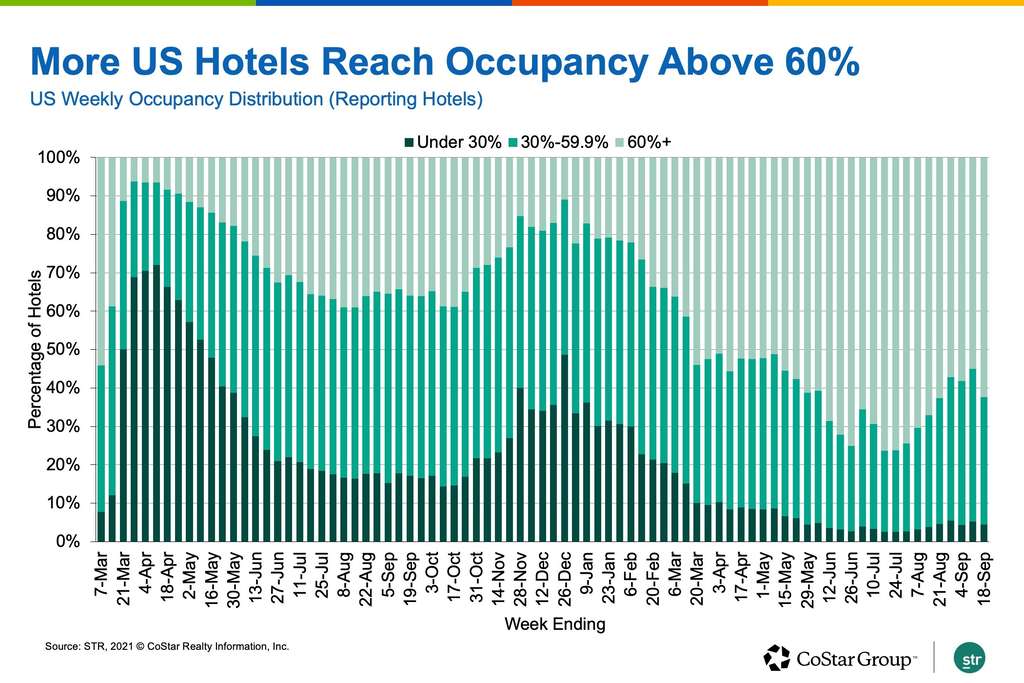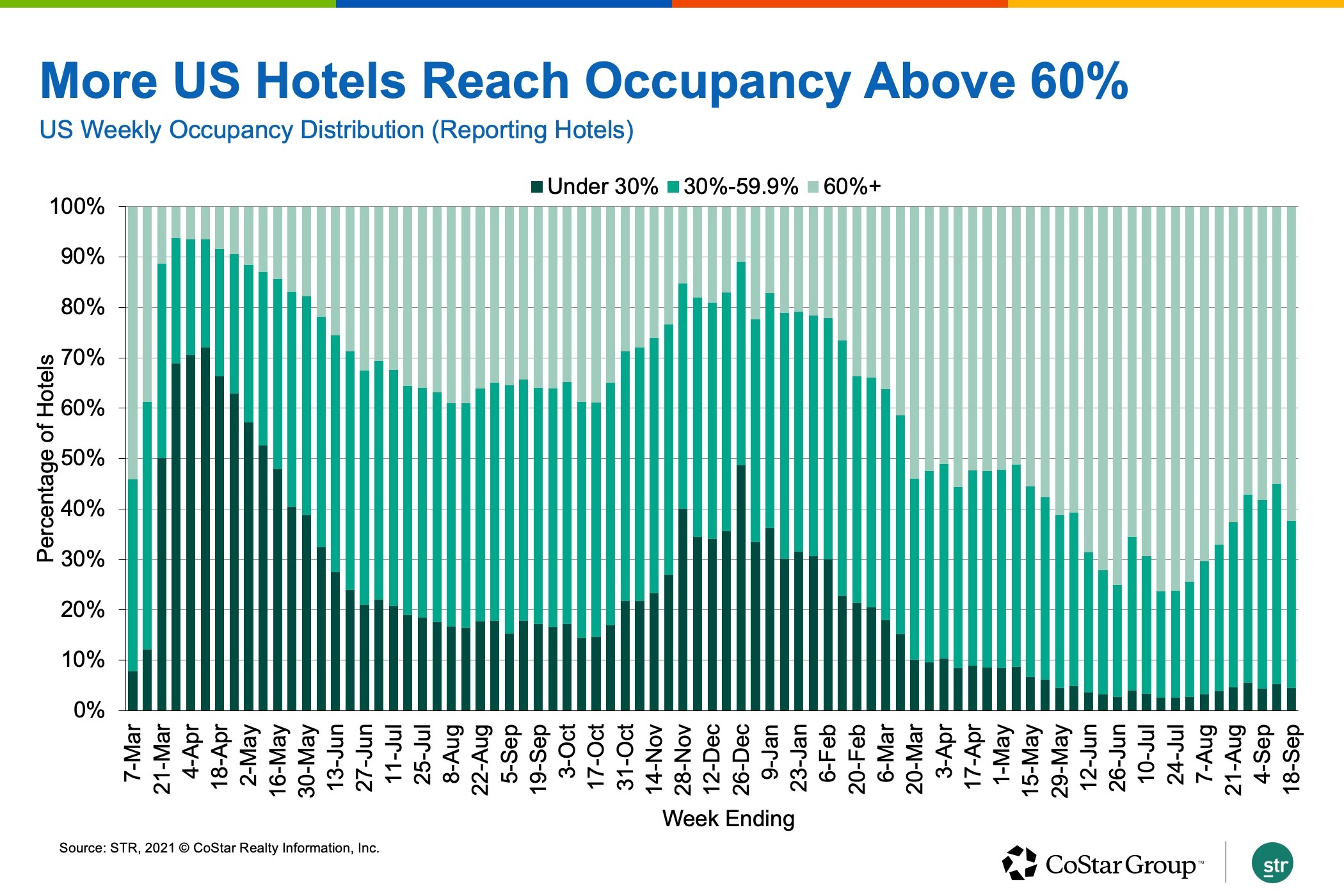US Hotels Could Have a Better Fall Season Than Expected
Industry Performance Reaches Highest Level of Past Four Weeks
In a sign that fall U.S. hotel performance will be slightly better than expected, the U.S. hotel industry posted its best performance in a month, according to the latest weekly data from STR, CoStar’s hospitality analytics firm.
U.S. hotel occupancy for the week ending Sept. 18 was at its highest level of the past four weeks, as half of all hotels sold 90% or more of the rooms that were sold during the same week in 2019. The weekly occupancy was 85.6% of the level achieved in the same week in 2019.
Weekly demand was 90% of the pre-pandemic 2019 level, as hotels sold 24.3 million rooms, an increase of 1.2 million rooms sold the previous week and the largest weekly gain of the past nine weeks. During the same week in 2019, U.S. hotels sold 27.1 million rooms.
Subdued demand was expected for the week due to the midweek observance of Yom Kippur, but demand actually increased in 84% of all U.S. markets. Compared with the same week in 2019, which was free of any holidays and religious observances, 73% of markets reported demand that was 90% or more of the 2019 level. Even against somewhat more difficult comparisons, the weekly 2019 demand index to 2019 rose by 2.2%, the best weekly gain in 11 weeks.
Over the past 11 weeks, weekend hotel demand has ranged from 92% to 101% of 2019 levels, the highest reported during Labor Day weekend. For the weekend of Sept. 18, it was 99% of the 2019 level.
According to STR’s Market Recovery Monitor, the U.S. hotel industry remained in “recovery” for the 15th straight week, with revenue per available room, on a total-room inventory basis that accounts for temporarily closed hotel rooms, that was 84% of the level achieved in the same week of 2019. The index to 2019 increased 0.8 points from the previous week.
A little more than 49,000 rooms remain temporarily closed, mostly in New York City, which accounts for 28% of the temporarily closed rooms, and Orlando, which has 12%.
For the week, 134 markets — 81% of all STR markets — were either in “recovery” or at “peak,” with total room inventory RevPAR higher than 2019. Five markets — two more than last week — were in the “depression” category, with total room inventory RevPAR less than 50% of the 2019 level.
San Francisco’s hotel market continued to have the lowest total room inventory RevPAR index to 2019, as it has for nearly the entire year.
On a 28-day moving total basis, 89% of markets were in “recovery” or “peak,” down from 90% last week. The percentage remains high on that basis given the strong summer gains observed in many destination markets.Weekly Performance Highlights
U.S. hotel occupancy was 63% for the week. Daily occupancy advanced every day of the week except Sunday, culminating in a level of 78% on Saturday. That level was the second highest of the past seven weeks and was only surpassed by the Saturday ahead of Labor Day.
At the hotel level, 62% of all hotels reported weekly occupancy surpassing 60%, with most above 70% and a quarter above 80%.
Weekday occupancy also rose to a four-week high of 58%, as occupancy in the top 25 markets advanced to 56%. More encouraging, 60% of hotels in the top 25 markets reported occupancy over 60%, the most in four weeks.
Upscale and upper-upscale hotels achieved the largest demand gains in the top 25 markets, accounting for nearly 60% of the weekly growth. Occupancy at group hotels advanced by nearly two percentage points for a second straight week, reaching 48%, the highest level since mid-August.
Overall, weekday group demand in top 25 markets increased by more than 200,000 room nights, the biggest gain in nine weeks, which suggests nascent conference travel. Weekend demand and occupancy continued to impress with occupancy up to 73% in the top 25 markets and 76% elsewhere. Outside of the top 25 markets, weekend occupancy was nearly equal to the level reported Labor Day weekend.
Weekly average daily rate was essentially flat from the previous week, and was down 3% from the same week in 2019. It was the second straight week in which ADR indexed lower than the 2019 level. Adjusting for inflation, weekly ADR was down 8% compared to 2019.
Weekday ADR fell 1.9% week over week, but weekend ADR rose 3%.
At luxury hotels, weekday ADR was down 0.8% from the previous week, while upper-upscale grew ADR by 0.6%. Midscale and economy hotels each reported weekly ADR declines of 3%.
Overall, compared with three weeks ago, industry ADR is down 1%, driven by a 2.6% decline in weekday rates especially in leisure destinations that experienced strong summer gains. However, in top 25 markets, weekday ADR was up 3.2% from three weeks ago.
New York City weekday ADR was up 25% compared with the week of Aug. 28.
Isaac Collazo is VP Analytics at STR.
This article represents an interpretation of data collected by CoStar's hospitality analytics firm, STR. Please feel free to contact an editor with any questions or concerns. For more analysis of STR data, visit the data insights blog on STR.com.
About STR
STR provides premium data benchmarking, analytics and marketplace insights for the global hospitality industry. Founded in 1985, STR maintains a presence in 15 countries with a corporate North American headquarters in Hendersonville, Tennessee, an international headquarters in London, and an Asia Pacific headquarters in Singapore. STR was acquired in October 2019 by CoStar Group, Inc. (NASDAQ: CSGP), the leading provider of commercial real estate information, analytics and online marketplaces. For more information, please visit str.com and costargroup.com.
